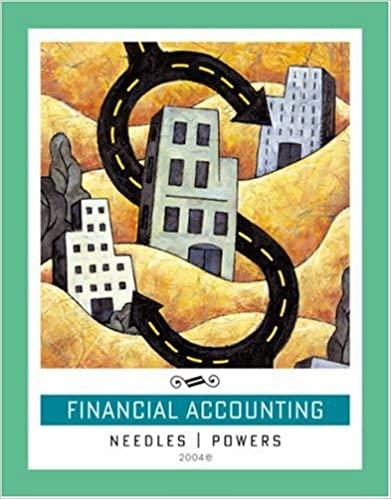Answered step by step
Verified Expert Solution
Question
1 Approved Answer
Sell-or-Process-Further Decision Humbolt Electric manufactures electronic subcomponents that can be sold at the end of Process 1 or processed further, in Process 2, and then
| Sell-or-Process-Further Decision Humbolt Electric manufactures electronic subcomponents | ||
| that can be sold at the end of Process 1 or processed further, in Process 2, and then sold. Currently, | ||
| the entire output of Process 1 can be sold at a price of $2 per unit. The output of Process 2 has in | ||
| the past sold for $5.50 per unit; however, the selling price of this output has recently dropped to | ||
| $5.10 (on average). | ||
| On the basis of an analysis of the preceding cost and selling price information, as well as an | ||
| analysis of market trend data, the VP of marketing has suggested that output from Process 2 should | ||
| be curtailed whenever the price of its output falls below $4.50 per unit. The VP of manufacturing | ||
| has indicated that the total available capacity is interchangeable between the two processes. | ||
| (That is, fixed manufacturing costs are largely independent of decisions regarding short-term product | ||
| mix.) He recommends that, based on current prices, all sales should be from Process 2 output. | ||
| His analysis follows: | ||
| Output of Process 1 | Output of Process 2 | |
| Selling price per unit $2.00 $5.10 | $ 2,00 | $ 5,10 |
| Unit costs: | ||
| Direct materials (DM) 1.00 1.50 | $ 1,00 | $ 1,50 |
| Direct labor (DL) 0.20 0.40 | $ 0,20 | $ 0,40 |
| Manufacturing overhead 0.60 1.20 | $ 0,60 | $ 1,20 |
| Transferred-in variable costs from | ||
| Process 1 (DM + DL) N/A 1.20 | N/A | $ 1,20 |
| Operating profit $0.20 $0.80 | $ 0,20 | $ 0,80 |
| Direct materials (DM) and direct labor (DL) are variable costs. All manufacturing overhead costs | ||
| are fixed and are allocated to units produced based on hours of capacity used. | ||
| Total hours of capacity available are 600,000. The products are produced in batches of 60 units. | ||
| Each batch of output from Process 1 requires 1 hour of processing; each batch of output from | ||
| Process 2 requires 2 additional hours of processing. | ||
| Required | ||
| 1. Develop a schematic diagram of the two-stage production process. Include in your diagram relevant | ||
| revenue (selling price per unit) as well as relevant costs (per unit of output). | ||
| 2. Assume that the per-unit selling price for output from Process 2 for the coming year is expected to be | ||
| $5.10. (a) What is the contribution margin per hour for output from Process 1 (rounded to 2 decimal | ||
| places)? (b) What is the contribution margin per hour for output from Process 2 (rounded to 2 decimal | ||
| places)? (c) What is the implication of this information if the goal of the company is to maximize shortterm | ||
| operating income? | ||
| 3. What is the lowest acceptable selling price per unit (to 2 decimal places) for the output from Process 2 | ||
| to make this output (in total) as profitable (in total) as the output from Process 1? | ||
| 4. Suppose that 50% of the manufacturing overhead costs are variable. (a) What is the revised contribution | ||
| margin per hour (rounded to 2 decimal places) for output from Process 1? (b) What is the revised | ||
| contribution margin per hour (to 2 decimal places) for output from Process 2? (c) Does your answer to | ||
| requirement 2 change, based on these revised calculations? | ||
| 5. Sensitivity analysis: (a) Calculate the contribution margin per processing hour (to 2 decimal places) | ||
| for both Process 1 output and Process 2 output under each of the following assumptions regarding the | ||
| percentage of variable overhead costs: 0%, 25%, 50%, and 100%. Perform these calculations for Process | ||
| 2 output both for a selling price of $5.10 per unit and a selling price of $5.50 per unit. (b) What general | ||
| conclusion can you draw on the basis of this sensitivity analysis? | ||
Step by Step Solution
There are 3 Steps involved in it
Step: 1

Get Instant Access to Expert-Tailored Solutions
See step-by-step solutions with expert insights and AI powered tools for academic success
Step: 2

Step: 3

Ace Your Homework with AI
Get the answers you need in no time with our AI-driven, step-by-step assistance
Get Started


